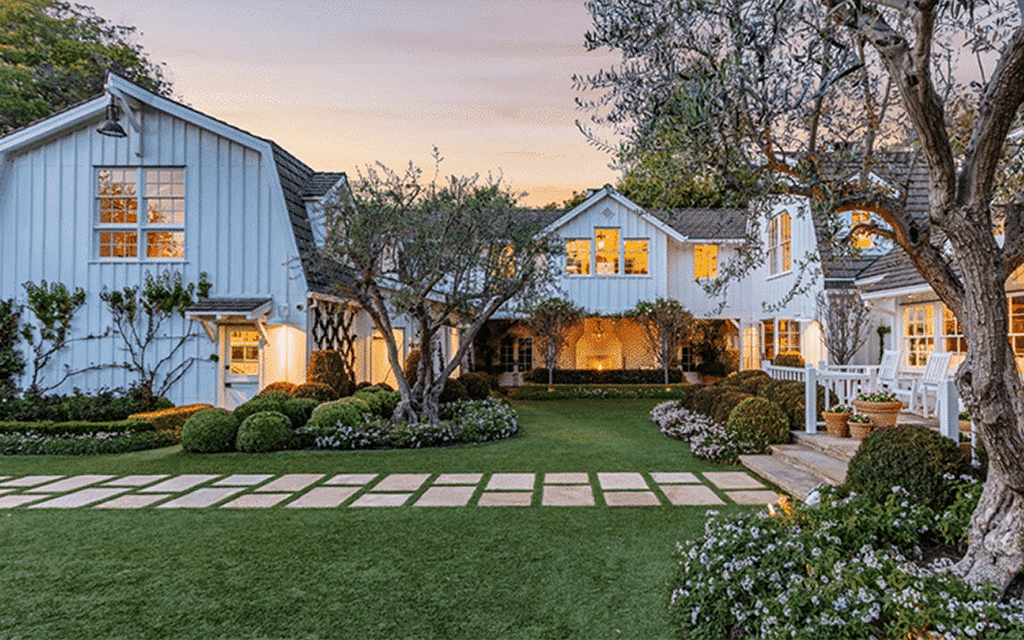The goal of real estate photography is simple, but easy to forget: Make your potential buyers stop scrolling Zillow and pick up the phone to call you. Get them excited about the home, and your phone will ring.
Easy for a mansion with a grand ballroom that’s priced 30% below market, but harder for homes with peeling paint and warped floors. So how do you take gorgeous pictures of a less-than-gorgeous home without hiring a pro? In this guide we’ll walk you through nine simple strategies you can use to get professional quality pictures of any listing.
Preparing for Your Shoot

1. Schedule Your Shoot for Early Morning or Late Afternoon
Believe it or not, the key to effective real estate photography that actually makes your phone ring has nothing to do with your camera, or even your photography skills. In my career, I’ve seen agents take professional looking pictures on their iPhones by taking advantage of one of the few things they actually have control over: the time of day they schedule their shoots.
If you want photos that you shot on your phone that look like they were shot on a $5,000 camera, schedule your shoot to start in early morning or late afternoon when the sun is closest to the horizon. This is known as the golden hour in photography. Here’s why it’s so important for your listing pictures:
- The golden hours of early morning or dusk are perfect for dramatic hero shots of the home’s exterior. Many photo editors fake dusk shots; why not capture them for real?
- You will get bright sun for interior photos after golden hour in the morning, or before golden hour if you start your shoot in the late afternoon
When it comes to editing and posting your photos, timing is even more important. I can’t even count the number of times I thought I had great pictures on my camera only to discover I had dust on the lens when I opened them on my computer. Instead of scrambling at the last second to hire a photo editor, plan ahead and find a talented and affordable professional on Fiverr. You’ll thank me later.
2. Send Your Homeowner Our Listing Photography Prep Checklist
After your shoot is scheduled, it’s time to put on your therapist hat (which should be well worn at this point) and work with your homeowner to depersonalize and declutter the listing.
Trust me on this: They don’t have to be hoarders to make this a stressful proposition. Most people would rather get a colonoscopy than find a home for all the precious junk in their living room. But a neutral home with only decorative elements is essential for great listing pictures.
Here’s a quick checklist you can use to take the sting out of asking them to clean windows and put away toys just so you can take pictures.
General
Living Room
Kitchen
| Bathrooms
Bedrooms
Dining Room
Front & Backyard
Finished Garages or Basements
|
You can copy and paste the checklist above if you want to edit it, or just download our spiffier version as a PDF below and add your personal branding using Acrobat Pro.
3. Schedule a Virtual Tour on the Same Day as Your Shoot
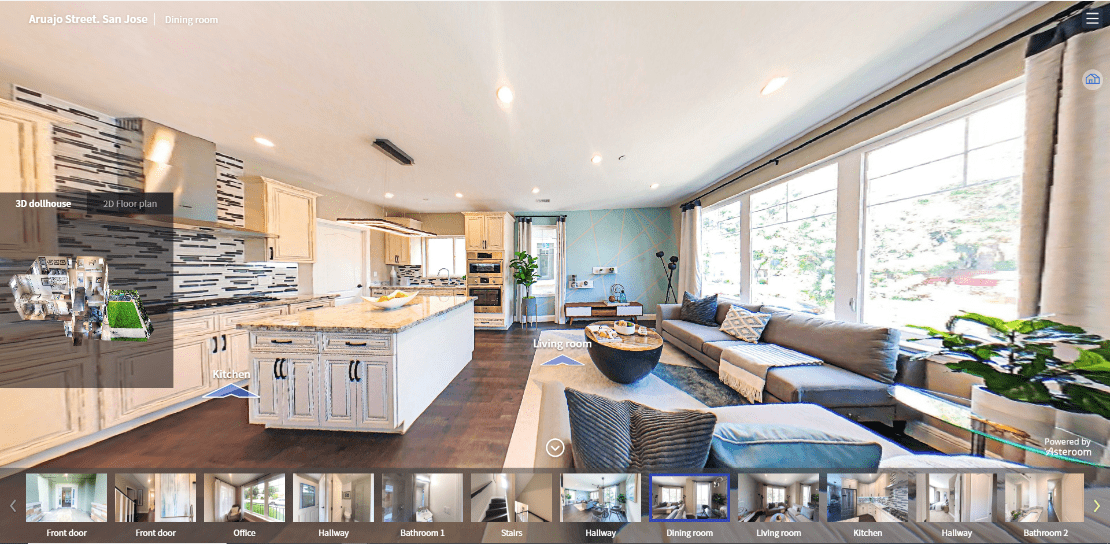
If you want your listing photography to help you sell the home, consistency is crucial. Every image you post on your multiple listing system (MLS) or Zillow needs to be high quality, and preferably have the same lighting. Yes, even your virtual tours! When a buyer scrolls through your listing on Zillow, the living room should be just as brightly lit as it is in the listing photos. Scheduling or shooting your virtual tour on the same day as your shoot is an easy way to make that happen.
Even better, scheduling your real estate photography shoot and virtual tour on the same day means you only have to ask your homeowner to get lost once. Most people will happily disappear to the mall for a few hours on a Sunday, but might get annoyed when you ask them to leave again for your virtual tour.
Don’t want to shell out the big bucks for a Matterport camera or deal with the hassle of scheduling with a pro? With Asteroom, you can create professional quality virtual tours with your phone for a fraction of the price. That means you can offer virtual tours for starter homes or even rentals.
The Day of the Shoot
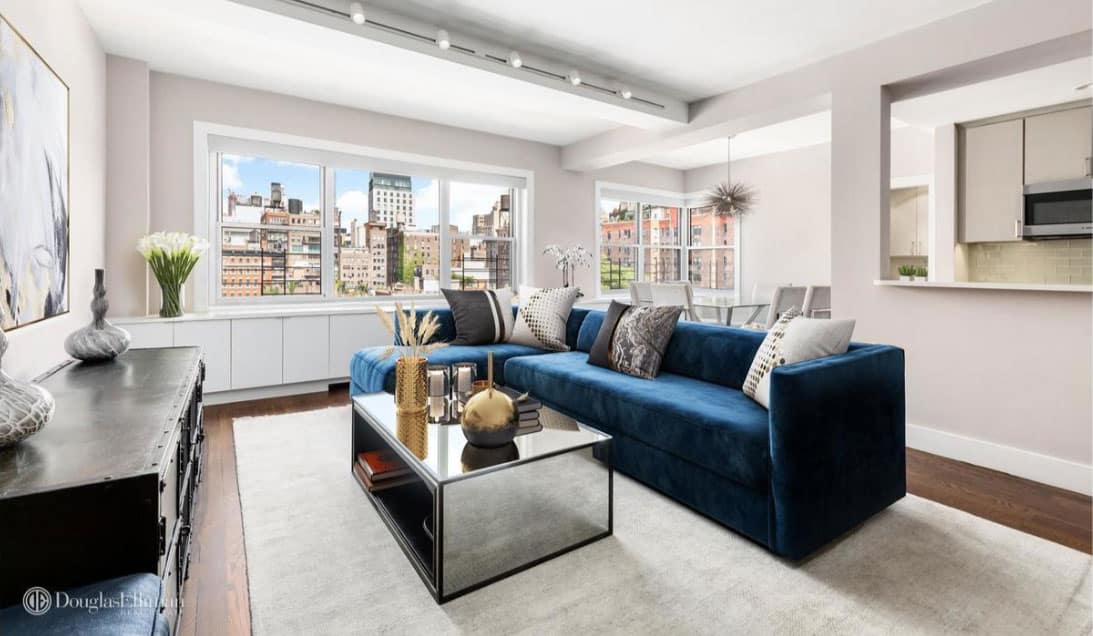
4. Do a Final Walk-through Before You Start Shooting
When you finally show up to the home on the big day, don’t just set up your gear and start snapping away. Instead, take a few minutes to walk through the home to check for any surprises that might interfere with your shoot.
Clutter & Cleanliness Spot Check
Even if your homeowner swears up and down that they spent hours cleaning and decluttering, in my experience, they almost always forgot something. It might be something small like leaving the toilet seats up, or it might be something major like dirty windows or a stack of boxes in the dining room. Do your best to address these issues on your walk-through so you can focus on composing pictures that make the home look beautiful when you’re actually shooting.
Look for Unique Details & Vignettes for Scroll-stopping Images
Including shots of trendy or beautiful details that get buyers excited is an excellent way to get people to stop scrolling and pick up the phone. Even better, this kind of real estate photography can help draw attention away from flaws of the home. “Honey, I know it needs work but look at those mantles and that parquet flooring!” So be on the lookout for any details that make the home unique or desirable and make a mental note to shoot them.
This stunning light fixture is a good example of a detail you might want to shoot:
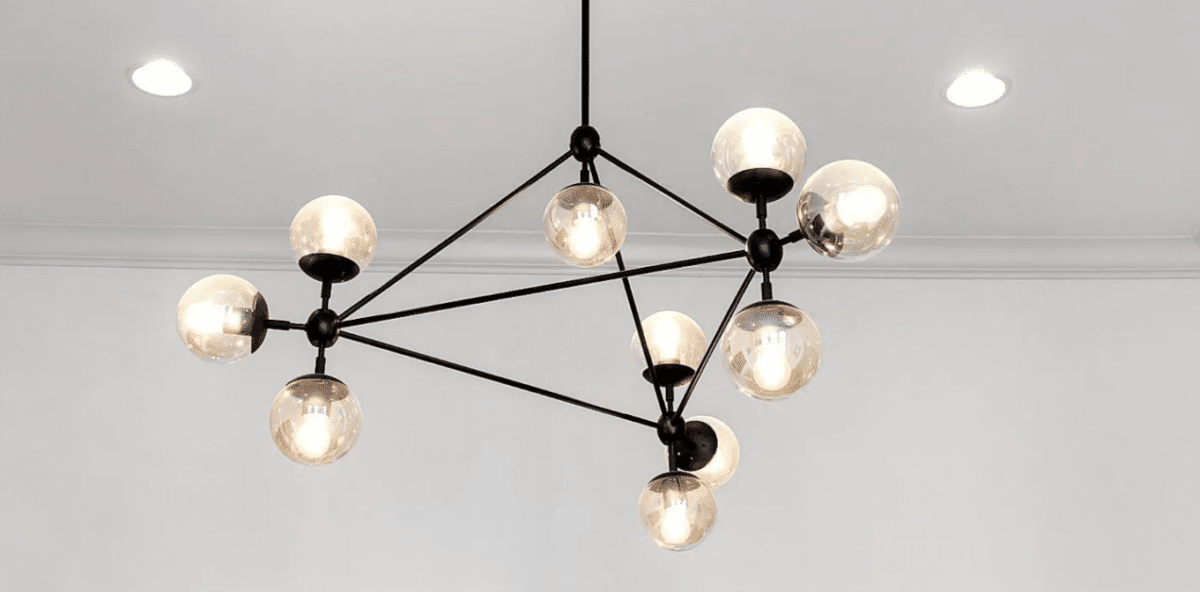
One trick professional real estate photographers use to offer an aspirational view of the current homeowners is shooting vignettes. These are tightly cropped pictures that show off the lifestyle of the homeowner to help a potential buyer daydream about living there. Look for cozy seating areas, interesting art, or any other area that oozes charm.
Here is an example of a vignette. Note how this picture doesn’t show how big the room is. It’s just a small, lovely corner of the home:
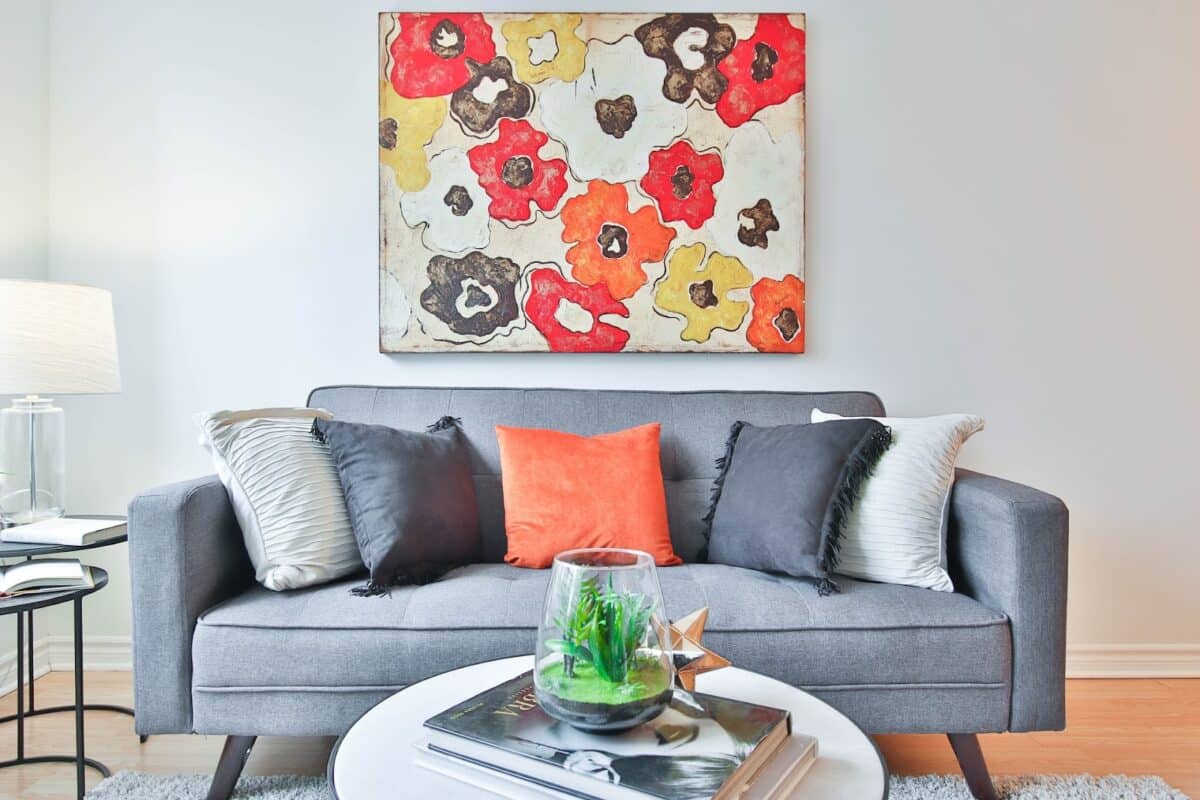
6: Create a Shot List Based on Your Walk-through
After you finish your walk-through, it’s time to plan the order of the rooms and details you will photograph. This is called a shot list. It might seem like overkill at first, but planning out your shoot will make it much easier to sort through your pictures when you get back to the office. In most cases, you’ll want to shoot in the same order your pictures will be on your MLS.
Pro tip: Try to capture at least three angles of every room you photograph plus any details or vignettes you found on your walk-through.
The only caveat here is that you won’t be able to capture a trendy dusk picture of the front of the house if you show up before the golden hour. This is why we recommend shooting the exterior of the home twice: once when you first arrive, and once at the end of your shoot.
Here’s an example of a shot list:
Exterior of the Home: Full Sunlight
The front of the home: One head-on and one from each from angle
The backyard: 1 shot of the view of the yard from the home, 1 shot of the view of the home from the yard, detail shots of the yard
Interior of the Home
Capture three angles as well as details and vignettes of each of the following:
- Living room
- Kitchen
- Primary bedroom
- Primary bathroom
- Guest bedrooms
- Guest bathrooms
- Home office
- Finished basement
Exterior of the Home: Dusk
The front of the home: One head-on, one each from right angle and left angle
Pro tip: Remember to turn on the interior lights when you shoot your dusk shot of the front of the home for that warm, cozy glow!
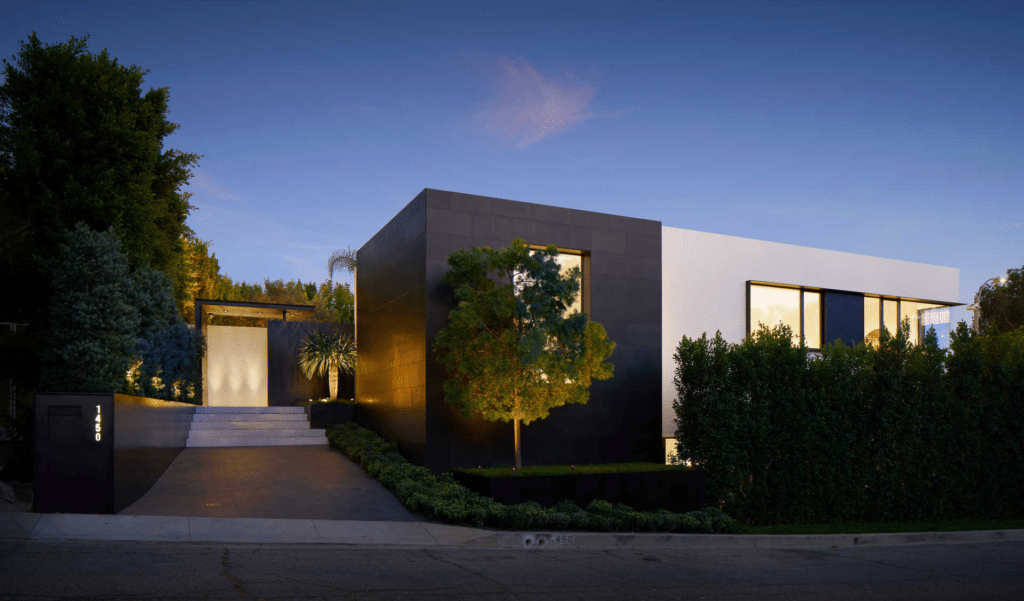
7. Shoot on a Tripod–Even in Bright Light
With all the eye-wateringly expensive gizmos you can buy for photography, there is one tool that is a must for real estate photography: a high-quality tripod. Seriously. Don’t skimp on this or think you can get away without one. Professional photographers spend hundreds or even thousands of dollars on tripods for a simple reason: They make taking consistently great pictures much easier. Unless the floor is made of quicksand, you should try to use your tripod for every shot you take. Here’s a short, but by no means exhaustive, list of the benefits of this essential tool:
- Reduce or even eliminate the odds of taking blurry pictures
- Take multiple pictures from exactly the same height and angle
- Most tripods have built-in levels to ensure your photos are straight
- You need a tripod to take longer exposures at dusk or in dimly lit rooms
- A tripod can double as a stand for lights or 3D cameras
8. Compose Your Pictures Using the Rule of Thirds
There is a formula that professional photographers use to compose their pictures that was discovered in 300 BCE. Don’t believe me? Take a look at the photograph below.
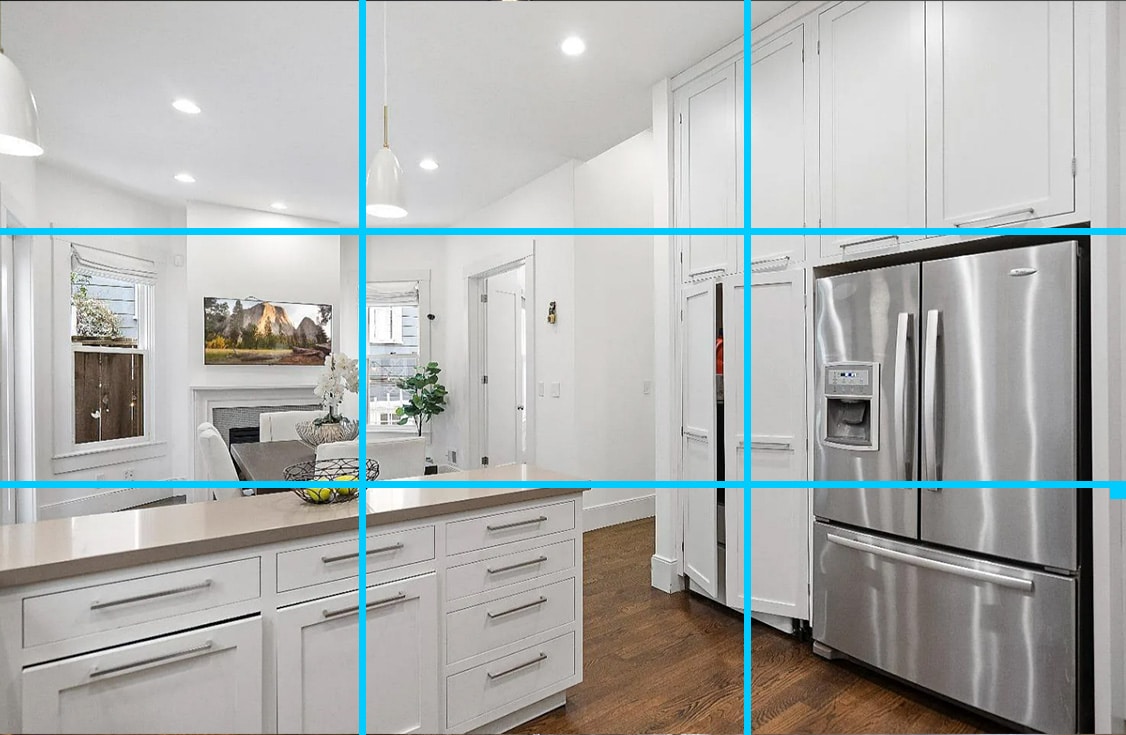
Notice how the bowl of fruit on the countertop, the light fixture, and the open cabinet doors all line up at the intersections of the blue grid? Notice how the picture is broken up vertically into three sections that roughly match the three horizontal sections of the grid? That’s no accident. It’s a composition technique that most professional photographers use to produce pictures that just look right, known as the rule of thirds.
Now let’s look at the same picture composed without using the rule of thirds. All the same elements are there, but it just looks… off.
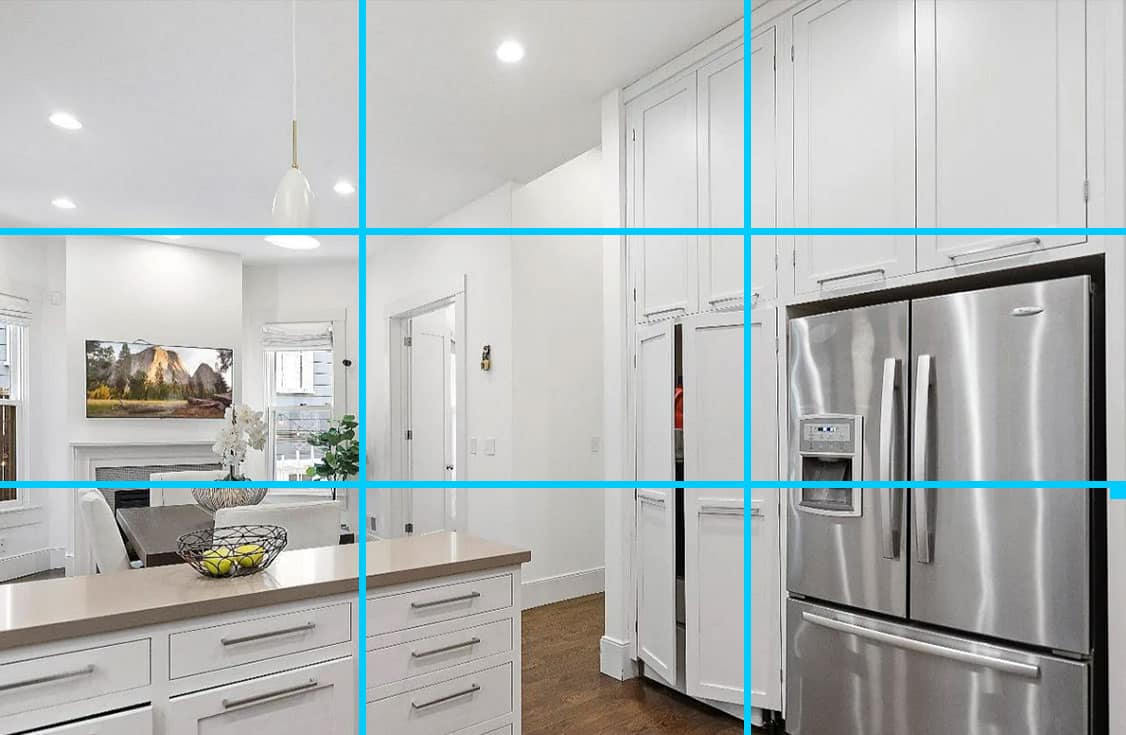
Here’s how to use the rule of thirds in your listing pictures to nail the composition every time:
- Try to position your camera so that there are roughly three distinct horizontal sections in your image.
- Position at least one focal point of your image in one of the four places the vertical and horizontal lines intersect. A focal point can be anything that stands out in the room, like the bowl of fruit in the images above.
How to display the rule of thirds grid on your camera:
- iPhone: Open your camera app and press settings, then camera, then composition. Finally, tap the toggle on under “grid.”
- Samsung Android: Open your camera app and press settings. Scroll down and toggle on the button next to “grid.”
- Sony Alpha DSLR: Under menu, go to camera settings, and then grid line.
- Nikon DSLR: Under menu, select setup, then display, then grid display.
- Canon DSLR: Under the yellow wrench menu, navigate to the fourth submenu: shooting info. Under Disp, choose grid display.
9. Use Natural Light Whenever Possible
Unless you plan on dropping an entire commission check at the camera store, try to shoot in natural light whenever you can. Why? Cameras aren’t magic boxes that capture exactly what your eyes see. It can take photography students years to master the delicate interplay of light, aperture, and shutter speed to do that. So if you want attractive pictures, rely on mother nature instead.
A tripod is your best friend when it comes to shooting in natural light. Without one, you will end up with blurry pictures at best, and ghastly over-exposed images using your camera’s built-in flash at worst.
Real Estate Photography FAQ
Should I always stage a home I want to shoot?
Yes! Even if the home is already furnished, at the very least you will need to get your homeowner to declutter. It may not seem like it, but that’s what staging is. You are changing things in the home to look better on camera.
If the home is empty and you have the budget, always hire a professional company to stage it. You can learn more tips about staging a home here: 17 Clever Home Staging Tips From Top Agents (+ DIY Shopping Guide)
If you’re on a lower budget, consider virtual staging. Just remember to label your virtually staged images before uploading them to your MLS to avoid violating your MLS guidelines. You can learn more about virtual staging here: The Best DIY & Pro Virtual Staging Software (+ Tips)]
The homeowner has an adorable dog. Should I include her in a few pictures?
No. Even if your homeowner client has an incredibly photogenic pet, avoid the temptation to take pictures with them in the shot. Sure, pet owners may love it, but what about all the other buyers who check out your listing? Some people see a cute dog or cat and immediately think of allergies and bad smells. That snuggly picture of your homeowner’s Dalmatian by the fire just might alienate a significant percentage of your buyers.
What is the best camera for real estate photography?
This is like asking, “How do I speak French?” There are so many variables to consider here that any recommendation we make might not work for you. Some people are able to take gorgeous professional looking-photos with their iPhones, and some struggle to keep the floors looking straight with $5,000 professional DSLRs. It’s not the tool, it’s the person using it.
That said, here are some basic recommendations for cameras that should work for most real estate photography applications.
Best Phone Cameras for Real Estate:
- iPhone 14 Pro Max ($1,000+)
- Samsung Galaxy S23 Ultra ($899+)
- Google Pixel 7 Ultra ($999+)
Best Budget DSLR Camera for Real Estate
- Canon EOS Rebel SL3 ($749)
Best High-end DSLR Camera for Real Estate
- Nikon D850 ($2,500)
Best Budget Mirrorless Camera for Real Estate
- Sony Alpha A6100 ($749)
Best High-end Mirrorless Camera for Real Estate
- Sony Alpha A7 III ($1,699)
Is real estate photography easy?
Yes and no. It can take years to truly master the composition, framing, and interplay between light, aperture, and shutter speed that is required for truly stunning real estate photography. That said, anyone who puts in the time and effort to learn the basics can end up with pictures they would be proud to post on their MLS. Scheduling your shoot at the right time, always shooting with a tripod, and composing pictures using the rule of thirds are great first steps on the road to professional quality real estate photography.
When should I hire a professional photographer?
I recommend hiring a professional photographer whenever your budget allows. Hiring a pro lets you skip the learning curve and get consistent results for every listing. While your mistakes might not be immediately noticeable to you at first, when your seller compares your DIY photos to the professional pictures in other listings on Zillow, yours will almost always fall short. It’s a few hundred dollars well spent in my opinion.
Over to You
Have a killer DIY real estate photography tip we missed? Let us know in the comments.


